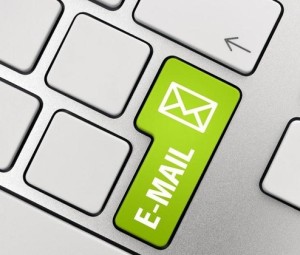Small businesses love the cloud. Actually, 87% of all small businesses already adopted some form of operating in the cloud, using a variety of cloud services and apps for many company tasks including: email, storage, calendars, and billing and invoicing.
When it comes to cloud storage, there are many services that claim to be the best, but two of the most popular choices are Dropbox for Business and Google Drive. Let’s examine why.
Dropbox vs Google Drive: An overall comparison.
1) Main offering:
- Dropbox: Team collaboration, instant file sharing, cloud backup, and file storage.
- Google Drive: Part of a complete suite of office apps including email, contacts, and calendar services; team collaboration, cloud backup, and file storage.
2) File size:
- Dropbox: is the superior service for storing and sharing large files as there are no file size limits.
- Google Drive: limits the size of files that can be stored and shared, so this can cause issues when dealing with large files.
3) Storage quota:
- Dropbox: Each time you revise a file and save it, the cloud storage provider saves it as an additional copy in case you need to revert back to an earlier version. Dropbox does not count those versions against your storage quota.
- Google Drive: Google Drive counts all versions against your storage quote, so if you revise a large file many times, you may run out of space!
4) Off-line / On-line file synchronization:
- Dropbox:
- Dropbox syncs real files, not “shortcuts”. All files are available both online and offline.
- Dropbox runs at a lower operating level than Google Drive, and does not consume as much of the CPU power or other resources.
- Google Drive:
- When saving documents to Google Drive, you will have the .gdoc files saved to your computer or device. This is not the actual document file, but is actually only a “shortcut” to the online file. You cannot access files offline unless you use an offline sync.
- If you enable the offline sync with Google Drive to your PC, you will need to have a powerful CPU, as this process will hog up resources and make your computer very slow.
There are many online publications that state the more you pay for a service, the better it is. We must wholeheartedly disagree with this statement! The truth is, it is much more important for a business to utilize a service that does what it says it will do, and always works.
*Stay tuned for next week’s blog post: we’ll be covering this in more detail!
Company email.
Google Apps provides the best solution for company-wide email through the Gmail service, which is currently used by over 5 million business customers. There are three main reasons why companies choose Gmail to handle their company email needs:
- Simplicity: Gmail is easy to use, can be accessed via any browser or desktop email client, and provides simple setup controls for forwarding, multiple account creations, and messaging services.
- Labels: Gmail provides a superior label and filtering system which allows users to filter messages, and have labels added based on the filter requests. By labeling emails, this provides a complete organizational system to have all emails filtered by a user’s specific query (i.e. create a label called “clients”).
- Reliability: Gmail has years of reliable reputation, and is so simple to use, that any employee can use it on any device: PC, Mac, laptop, mobile devices, etc.
4 Steps To Save Gmail Attachments to Dropbox.
cloudHQ makes it easy to integrate all the cloud files that are being used in your business. You can use Google Apps for email, calendar and contacts, while using Dropbox for storage- and rest assured that everything will integrate perfectly and reliably.
How-To in 4 Steps on cloudHQ
The IT administrator will create an integration between Google Apps and Dropbox for Business via cloudHQ. This can be accomplished in just 4 steps:
- Sign up for cloudHQ. Once you have signed up, visit the Sync Wizard.
- Choose Google Apps for Work, then authorize Google Apps to work with cloudHQ. cloudHQ will automatically detect your users.
- Choose Dropbox for Business, and authorize it to work with cloudHQ.
- Choose the users that will have access to the files that are synced between Dropbox and Google Apps.
How to Set up Your Gmail Labels
- Directly from your Gmail account settings, create a label for all employees. This label will be added to all relevant Gmail emails that you wish to sync. The label can be titled something like “Emails dropped here will be saved to your Dropbox,” so that all employees know exactly which emails and attachments will be synced and saved in Dropbox.
- Subfolders can be created under that label to keep things organized, so you can create folders named “invoices,” “contracts,” “photos,” etc. If you receive an invoice by email, you can simply drag-and-drop it into the Gmail label titled “Emails dropped here will be saved to your Dropbox/Invoices”.
Here is what each of employees will see:
The best part is that once cloudHQ is set up to handle all of these useful tasks, you can just set it and forget it. It performs all integration and syncing tasks in the background, and everything works reliably to make things a LOT easier on employees, small business admins, and executive officers.

